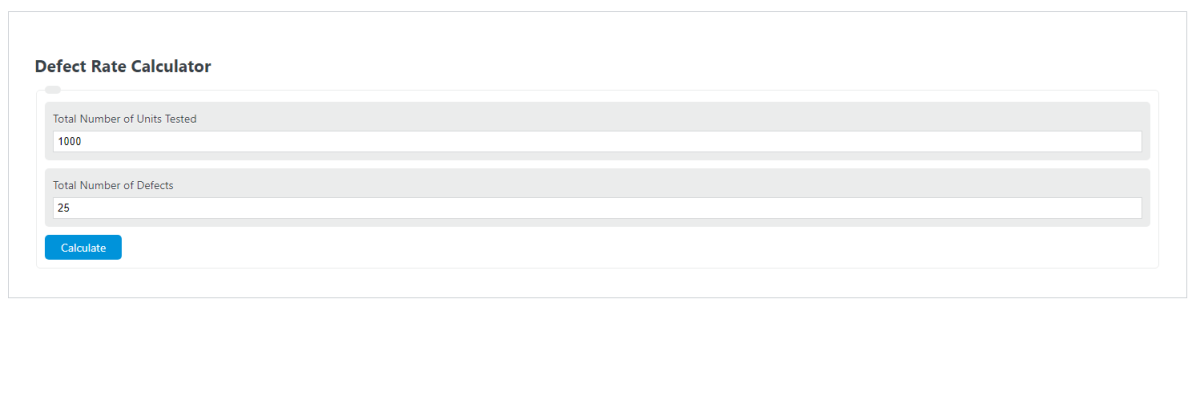Enter the total number of defects observed and the total number of units tested into the calculator to determine the defect rate.
- Sigma Level Calculator
- PPM Calculator
- Failure Rate Calculator
- DPMO Calculator (Defects Per Million Opportunities)
- Rejection Percentage Calculator
- Defect Density Calculator
Defect Rate Formula
The following formula is used to calculate the defect rate of a product.
DR = TD / UT *100
- Where DR is the defect rate (%)
- TD is the total number of defects observed
- UT is the total number of units tested for defects
To calculate the defect rate, divide the total number of defects by the total number of units tested.
What is a defect rate?
Definition:
A defect rate is defined as the total percentage of defects observed in a product per unit of the product tested.
There are two different ways to look at the defect rate. One way is that a product is simply defective or not. In this case, any defect in the product would make the entire product defective. The other way is that each product can have more than one defect.
Each method has its uses in determining the causes of defects in products and the severity.
How to calculate a defect rate?
Example:
The following example provides the steps and information required to calculate a defect rate of a product.
First, determine the total number of units that are being observed or checked for defects. In this example problem, there are 1000 units tested for defects.
Next, determine the total number of defects that are observed in the sample product. For this problem, there were only 25 defects in the lot.
Finally, calculate the defect rate using the formula above:
DR = TD / UT *100
DR = 25 / 1000*100
DR = 2.5 %
